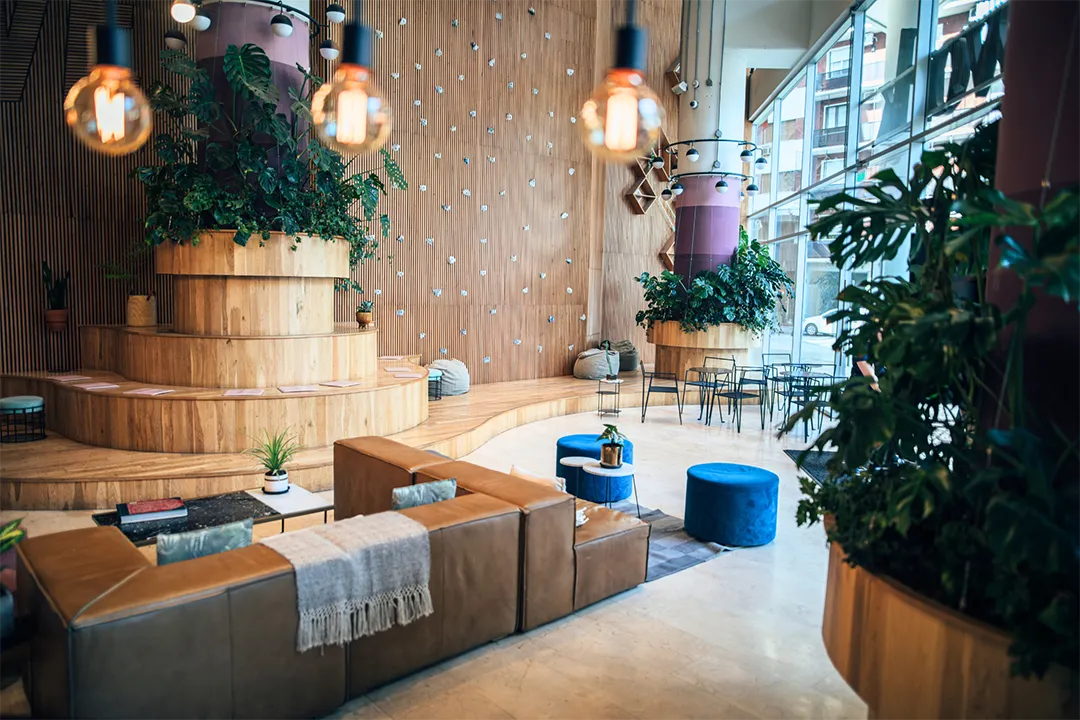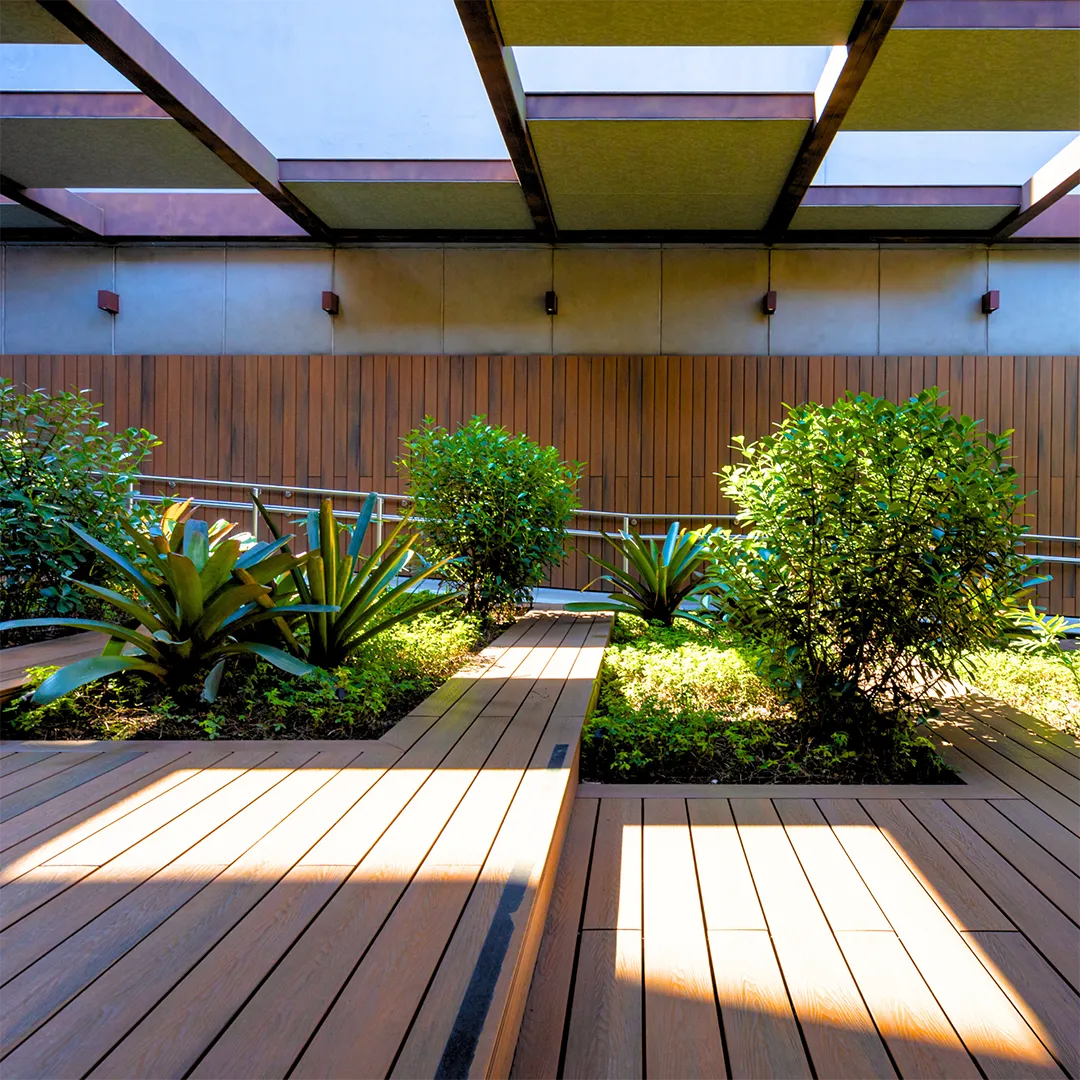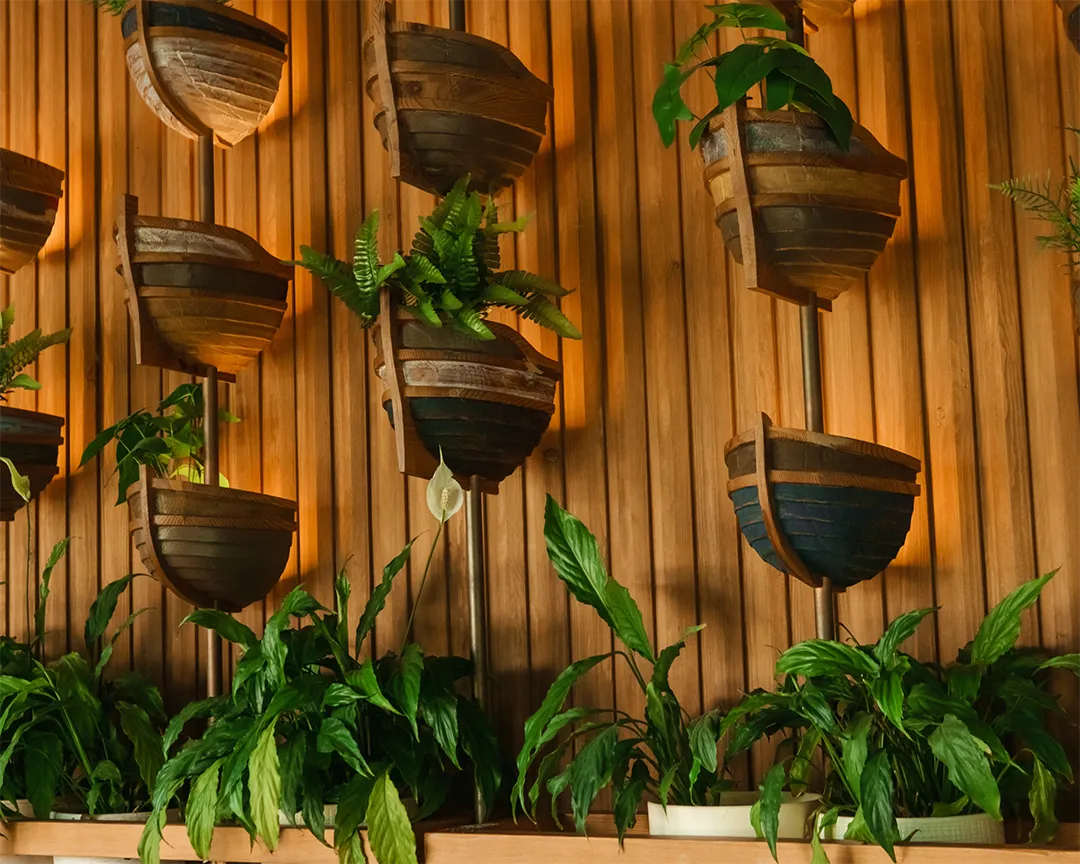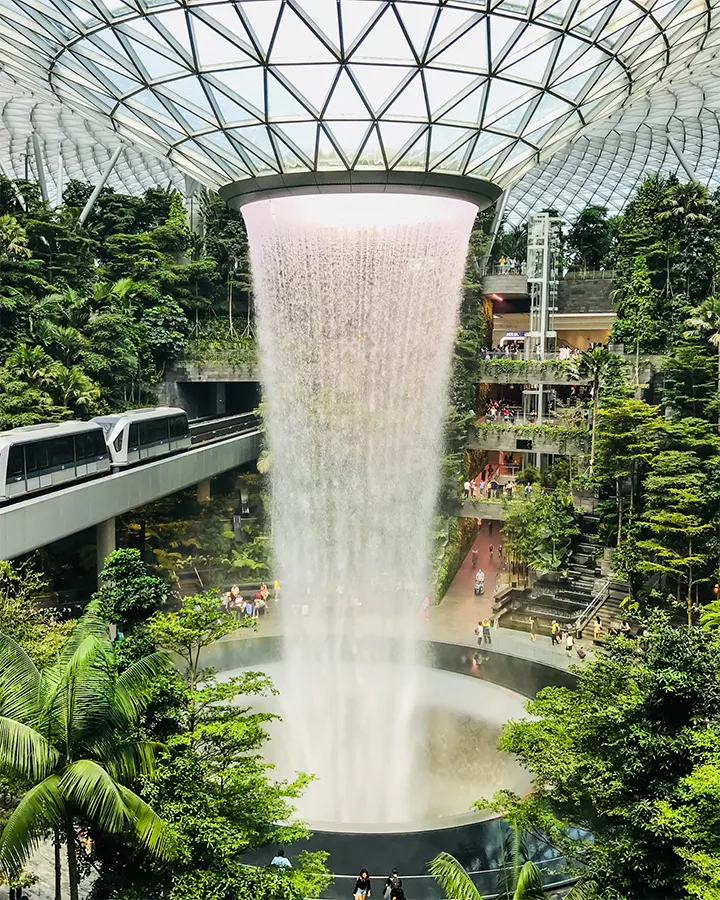
You may have heard about the “biophilia hypothesis” buzzing around in conversations about design. Back in the 70s, this hypothesis birthed study of biophilia, and what we now know as biophilic design. But what does it mean, and why should it matter in office spaces?
At its core, biophilia reflects humanity’s inherent need to connect with nature, a connection that can significantly impact our well-being. This bond is deeply rooted in our evolution — because nature provides essential resources, being around natural elements inspires feelings of comfort and safety. The human-nature connection is incredibly powerful, especially when it’s brought into our everyday environments — like the places where we work.
Imagine buildings with large windows that invite ample natural light, green walls covered in climbing plants, and rooftops transformed into gardens. Notice an array of potted plants, natural materials like wood and stone, and water features such as small indoor ponds or fountains. Sounds amazing, doesn’t it?
Incorporating nature in office space design is not just a passing trend. It’s backed by science and has proven benefits for employee health. When we surround ourselves with natural elements like plants, sunlight, and water, we feel more at ease, focused, and even happier. For interior designers, architects, and property managers, understanding the science behind biophilic design can help create office spaces that are not only beautiful but also enhance well-being and productivity.

Why nature in design matters
The science behind biophilia suggests our brains respond positively to natural elements, even when indoors. For example, research shows including nature in design significantly impacts employee health. People working in office spaces with elements of nature, such as greenery, natural light, and water features, experience lower stress levels and improved mood. Think about it — wouldn’t you feel more relaxed sitting next to a lush green plant than a sterile, white wall?
The benefits of nature in design go beyond feeling good. Integrating natural elements into office spaces not only reduces anxiety but also enhances creativity, improves focus, and boosts overall productivity. Employees exposed to nature in office spaces report feeling more engaged, motivated, and satisfied with their work environment. If you’re looking to boost morale and create a happier workplace, integrating nature into your design plans is a must.
Transform your office with biophilic design
Ready to enhance employee well-being and boost productivity? Let Plant Solutions help you incorporate natural elements into your office design with our professional plant installations, living walls, and more.
The physical health benefits of the biophilic design
The science behind biophilic design also shows how nature can improve physical health. Office spaces that incorporate plants and nature have much better air quality. Plants filter out toxins and increase oxygen levels, leading to fewer headaches, less fatigue, and a healthier workforce overall. And let’s not forget the impact of reducing sick days — less stress and better air mean fewer health issues for everyone.
Natural light also plays a crucial role in improving employee health. Exposure to natural light in office spaces can reduce eye strain, improve sleep patterns, and boost mood. By maximizing daylight with large windows, skylights, or using full-spectrum lighting, office spaces can support employee health in simple yet effective ways.

How to design a space inspired by nature — it’s what biophilic design is all about
So, how can you bring the biophilia hypothesis to life in your office spaces? Start with simple changes, like adding more plants. Use a mix of potted plants, hanging plants, or even a living wall. These elements make a space look great and create a calming and inviting atmosphere that helps reduce stress and mental fatigue.
Next, maximize natural light. Use open layouts, glass partitions, or skylights to let in as much daylight as possible. Don’t forget to incorporate natural materials like wood, stone, or water features. These touches of nature don’t need to be extravagant to make a difference — if you’re on a tight budget, consider wooden furniture, fiber-rich rugs, rock mosaic wall hangings, and plug-in water features surrounded by plants. Biophilic design helps create office spaces that feel vibrant and alive, which can enhance employee health and overall job satisfaction.

Biophilic design is a win-win for office spaces
By embracing nature-inspired design, you’re not just making office spaces look better — you’re creating environments that support employee health, boost productivity, and enhance overall well-being. For interior designers, architects, and property managers, biophilic design is a game-changer. It’s about designing office spaces that connect people to the outdoors even when they’re inside. This leads to happier teams and more successful businesses.
Next time you’re planning a redesign, consider bringing more nature into the mix. Remember, a little greenery goes a long way. Embrace the exciting science behind biophilic design and watch your clients enjoy its positive impacts.
Discover the benefits of biophilic design
Want to know how biophilic design can impact your workplace? Get in touch with us for a personalized consultation and start creating an office that promotes well-being and productivity.
